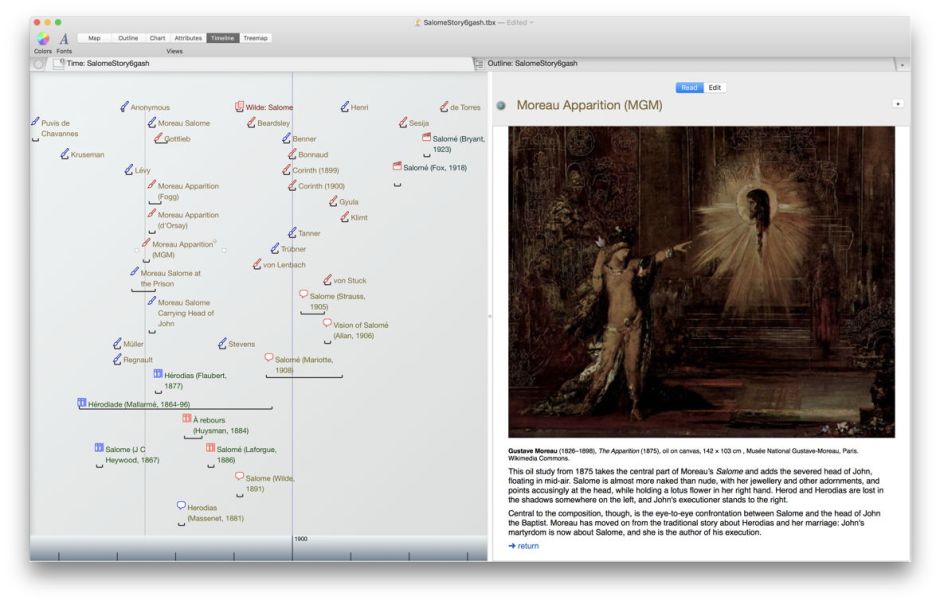Over the last couple of weeks, I have been putting together a hypertext document using Eastgate’s superb authoring environment, Storyspace. I think that it is pretty well ready now, and invite you to download it and try it out, please.
You will need a demo version of Storyspace 3, or the Storyspace Reader app, from Eastgate, in order to read the document. If you already have Eastgate’s Tinderbox, you can read it in that, but it is designed for use in Storyspace.
Download it from here: salomestory6
Significant changes
I have added quite a few writing spaces since I last wrote here about this project. These include an additional painting by Rogier van der Weyden, which I had omitted from my blog articles, and is rather wonderful. That includes multiplex narrative – in which two different moments in time are shown in the single image – which is often thought to be unusual, particularly in northern Renaissance paintings. In fact, it is quite common, and there are now three examples in this hypertext which demonstrate it well.
I have paid particular attention to web links, which have formed a lot of the work since I last wrote here. I have tried to ensure that all its web links work properly no matter which (recent) version of Storyspace or its Reader app you are using. And this has been an excellent demonstration of how Storyspace encourages reliable rhythmic workflows.
The web links used here are all ‘proper’ Web Links using text links, not the embedded ‘smart links’. The URLs which they use are crafted to ensure that they do not include Unicode characters outside the normal ASCII set. They should therefore work with all recent and future versions of Storyspace. My fingers are crossed.
To do this rhythmically is easy. I set up my browser (Safari) with the desired page to which I wish to link. I then copy that link into a text processor (BBEdit) so that I can inspect it for any non-ASCII characters, in this case typically the e-acute on Salomé. If there are any, I select each, copy and paste it into the Emoji & Symbols floating pane, and use its search feature to find the correct Unicode character. I then use the UTF-8 codes given there to hand-convert the character in the URL to escape format using %. So é becomes %C3%A9, and my desired URL for the web link is then ready in my text processor.

I then switch to the writing space into which I am going to place the web link, type its anchor text, and select the anchor.

I switch to the text editor and select the web link there, and Command-C to copy it. With that in the clipboard, I drop down the Make Web Link… command in the Note menu, which brings up the link editor pane.

All that I now have to do in that pane is change the type of link to text, verify that the URL has been correctly included, and click on the Create Link button.
When you are adding quite a lot of web links, this generates a lovely steady rhythm in which you can work through dozens of links in very few minutes, error-free – or so I hope I have shown in the document!

I have now added the end-matter, and linked to that from the start writing space, as shown.

With all the additional content, the timeline view looks really exciting, and shows how useful badges can be there. I have set the cursor line at the first of Moreau’s radical Salome paintings in 1875. Note how all the works whose badges are shown in red (indicating that they tell the ‘Wilde’ version of the story) appear to the right of that line, and the blue badges (works telling the Biblical version of the story) peter out over that period.

I hope that you love the look of the various views available, and find this an interesting and absorbing story about stories.
I intend making final fixes to this document, then releasing it as version 1.0.

